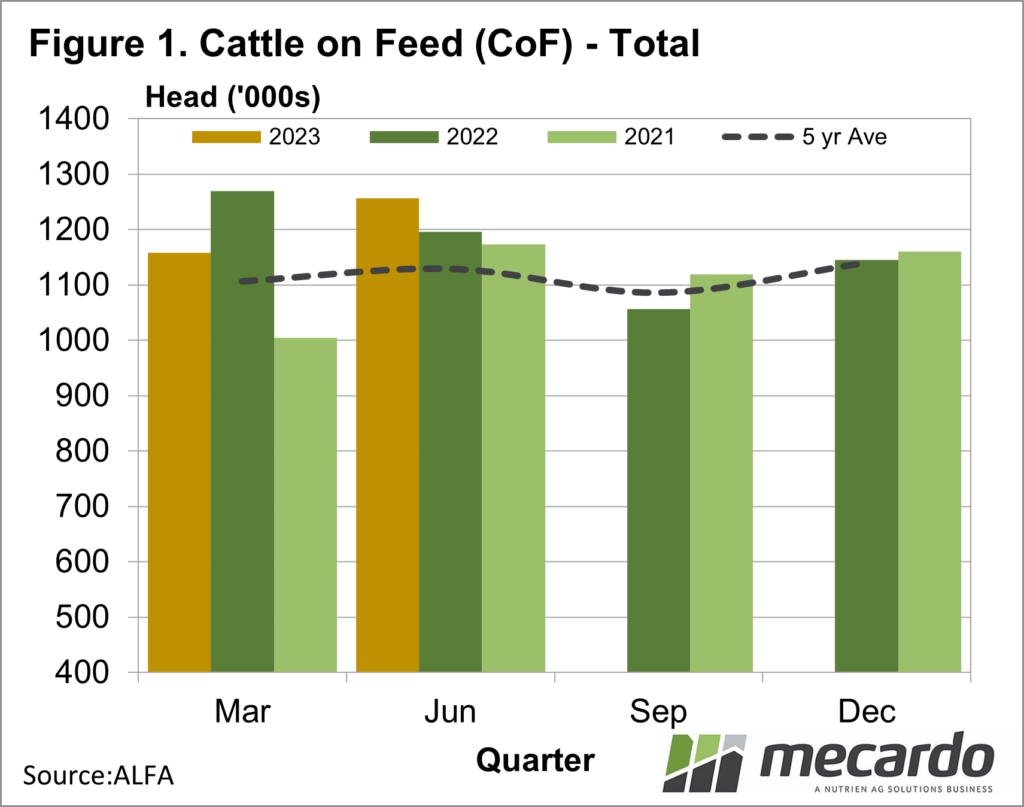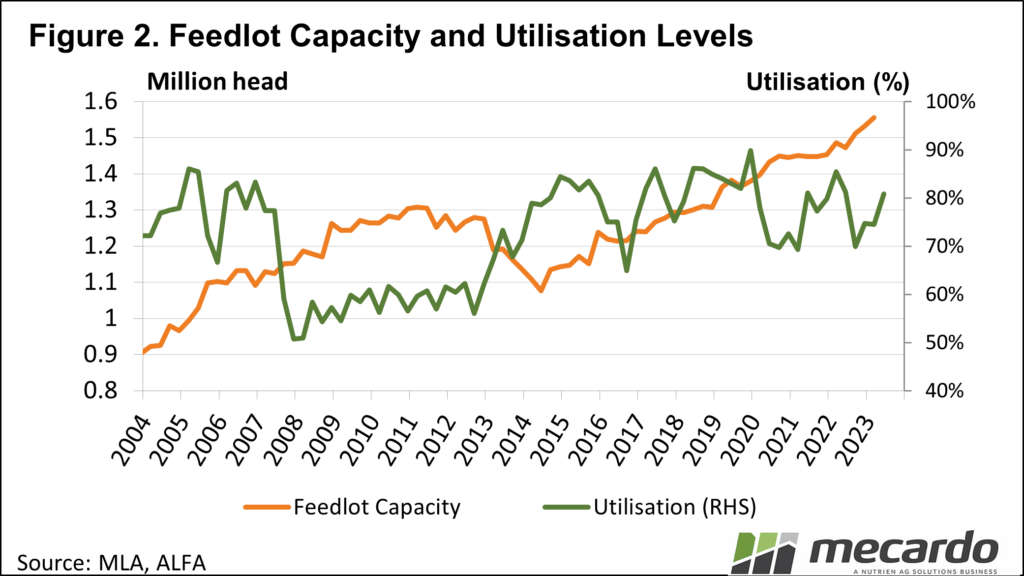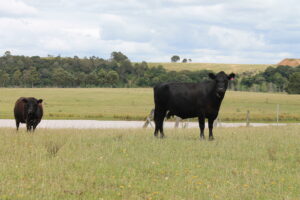Cattle on feed numbers have climbed close to record levels for the June quarter, as lower feeder cattle prices helped offset high grain prices. Capacity was also at a record, with utilisation increasing to its highest percentage since the same quarter last year. Also impacting the numbers on feed was the marketing numbers, or turnoff, which was lower year-on-year by about 3%.
There were 1.25 million head in Australian feedlots, an increase of 8.5% on the previous quarter, and 11.3% above the five-year average for March to June. This was primarily driven by Queensland, which increased its cattle on feed numbers by nearly 18% on the previous quarter, to a record high of 758,000 head. The next largest feeder state, NSW, lost ground on the previous quarter but still remained 6% above the five-year average.
At 1.55 million head, feedlot capacity across the country was at a record high, albeit only about 100 head more than the previous quarter. Again, it was Queensland that made up the difference, growing capacity from the previous quarter, while all other feeder states dropped numbers slightly. At 81%, capacity climbed 7% from the March quarter, to be equal with the June 2022 quarter. Marketings, or turnoff, increased quarter-on-quarter by 4% but was down 3% year-on-year, making them more than 15% shy of the record high, experienced in the December quarter of 2018.
The Australian Lotfeeders Association reported in their quarterly figures that the wheat ex Darling Downs price was up 2% on average for the quarter, to $408/tonne. The national feeder steer indicator lost 44c/kg for the quarter, representing a drop of 12%. The heavy steer price lost about 10% over the same period. Export values for the quarter aren’t in yet, but if we look at volumes, grainfed beef headed offshore has increased 5% for the year to July, led by China (up 14%) and South Korea (up (9%). Australia’s top grainfed beef market, Japan, has taken 5% less volume for the year.
What does it mean?
Cattle on feed numbers may be back to near-record highs, but as we can see from Figure 2, there is still plenty of space left in the pens. Much like the rest of the industry, the current quarter, and particularly the December period, will depend on what weather spring brings. Rain could mean more affordable grain inputs, and feeder cattle at the right weights. No moisture could increase feed prices further and make it harder to find cattle to finish quickly. Although they will be able to buy in at even cheaper rates, one would imagine.
Have any questions or comments?
Key Points
- Cattle on feed numbers climb to the second highest level on record for the June 2023 quarter.
- Capacity has increased ever so slightly to its highest volume yet, and utilisation of this capacity lifted 7% on the previous quarter.
- Total grainfed beef exports for the year to July have climbed 5%, and turnoff rose by about 25,000 head for the quarter.
Click on figure to expand
Click on figure to expand
Data sources: MLA, ALFA, Mecardo














